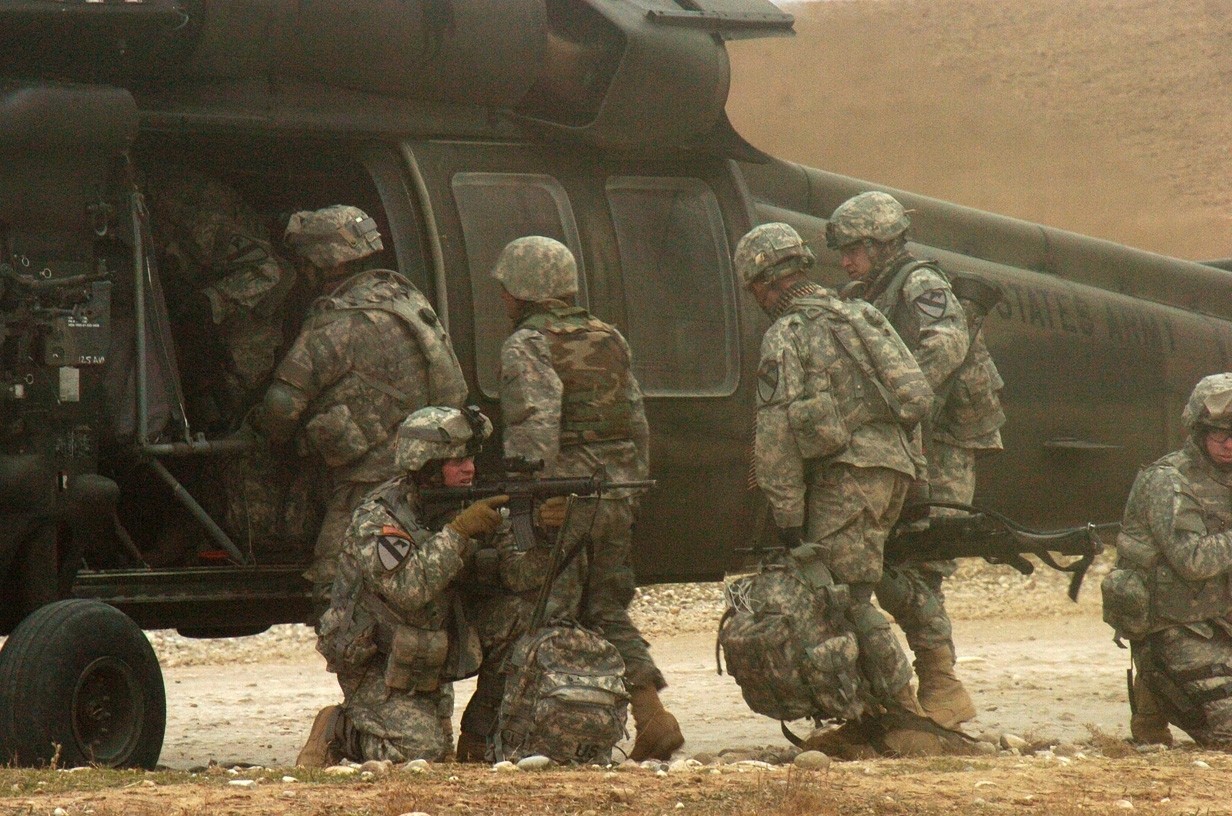
WASHINGTON (American Forces Press Service, Jan. 23, 2007) - The senior officers of two military services told a congressional committee today that although Soldiers and Marines are performing well overseas in the war against terrorism, more troops and money are needed to refurbish non-deployed military forces.
Army Chief of Staff Gen. Peter J. Schoomaker and Marine Corps Commandant Gen. James T. Conway testified before the House Armed Services Committee.
The Army has obligated $10 billion of $17 billon of funding appropriated by Congress for this fiscal year for replacement and repair of equipment used in Afghanistan and Iraq, Schoomaker told the lawmakers.
"We have received considerable support from this committee and the Congress to increase the readiness of our Army," he said. Consequently, U.S. Soldiers deployed to combat terrorists in Afghanistan and Iraq are the best equipped, best trained and best led ever, he said.
Yet, the Army is now wrestling with the task of rebuilding its stateside forces while supporting those stationed overseas, Schoomaker said.
"The immediate challenge lies with the readiness of the non-deployed forces," Schoomaker said, noting the Army needs Congress's support to address issues critical to maintaining the Army's overall readiness to respond decisively to potential contingencies.
Schoomaker praised President Bush's recommendation to increase the size of the Army by about 65,000 soldiers. That initiative, he said, recognizes the necessity to boost the Army's ranks during wartime when the all-volunteer force is being challenged with multiple commitments across the globe.
"Our goal is to provide a continuous supply of 20 to 21 brigade combat teams to meet global commitments," Schoomaker explained. "We remain committed to generating all-cohesive units that are fully manned, trained and equipped that are fully ready for the challenges they will face."
The plus-up will require a national commitment to provide and sustain the resources required to reset the Army in a balanced, coordinated fashion, while providing for the needs of soldiers and their families, Schoomaker said.
Also, the Army's active, reserve and National Guard components must be made ready to deploy together at any time, Schoomaker said. Defense Secretary Robert M. Gates's recent announcements about changing reserve components' mobilization policies to reflect this goal are essential, the general said.
"Our reserve components comprise 55 percent of our Army's capabilities," Schoomaker said. "We must fully enable them to perform their new role as an integral part of our operational deployable force."
The Army is working to rapidly implement those changes and will need Congress's continued support while doing so, Schoomaker said.
Schoomaker reiterated that the Army is well ahead of using the $17 billion in force-reset funding for fiscal year 2007. He anticipated that refurbishing funding requirements for next fiscal year will total $13.5 billion.
That figure should increase, he added, when overseas forces are bulked up and the overall size of the Army is increased.
"Because the replacement of equipment can take up to three years following the commitment of funds, we seek to make this funding available to use as soon as possible," Schoomaker said. "To overcome the unprecedented stress being placed on our equipment today, reset funding will be required for a minimum of two to three years beyond the duration of the current conflict."
Years of under-funding experienced during the years prior to the war against terrorism created a $100 billion shortfall in Army investment accounts, Schoomaker said. Today, a $56 billion shortage remains in funding to replace or repair worn out equipment, he said.
Schoomaker said the funding shortage has caused the Army to take equipment from non-deployed units and provide it to units sent overseas. This practice "increases risk for our next-to-deploy units and limits our ability to respond to emerging strategic contingencies," he said.
Conway noted his Marines' spirits remain high despite repeated deployments.
"Though the troops in the operating forces are being pushed hard by the operational tempo and the frequency of deployments, morale has never been higher, because they believe they are making a difference," Conway said.
The Marines are grateful for the support of the U.S. government and the American people, Conway said. Marines also appreciate the receipt of better-armored vehicles, force adjustments made to better balance deployment cycles, and President Bush's recommendation to increase the size of the Corps by about 27,000 troops.
"The recently proposed increase in our end strength to 202,000 active-duty Marines will go a long way towards reducing the strain, both on the individual and the institution," Conway said. If the plus-up is approved by Congress, he said, the Marine Corps plans to increase its number by about 5,000 troops annually.
The Corps now is making plans for increased recruiting and retention, Conway said.
"We'll need the continued support of Congress for enlistment bonuses and other programs such as advertising, which will be essential for us to continue meeting these growth challenges," Conway said.

Social Sharing